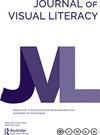观看的方式:视觉素养专业知识的眼动追踪研究
Q1 Arts and Humanities
引用次数: 2
摘要
几十年来,眼动追踪一直被用于研究一系列领域的感知过程,它已被证明对研究专家和新手在一个领域内的观看行为如何彼此不同特别有用。本文报告了一项研究,该研究使用眼动追踪来检查视觉传达专家和非专家阅读他们在日常生活中可能遇到的新闻照片的方式。专家参与者(29人)是在视觉传达领域至少有4-5年经验的从业人员;非专家参与者(29人)没有接受过视觉传达方面的培训,有0-1年的经验。参与者观看了10张图片,并回答了关于每张图片的4个问题。研究人员使用TobiiPro x2-60眼动仪与一台17英寸的高端游戏笔记本电脑相连,追踪参与者的眼球运动。文献表明,专家和非专家的眼球运动之间应该存在可观察到的差异,专家的观看行为更有效。然而,研究中专家和非专家参与者之间的差异是不一致的,而且远没有预期的那么广泛。本文讨论了这些结果的可能解释,并提出了未来研究的方向。本文章由计算机程序翻译,如有差异,请以英文原文为准。
Ways of looking: an eye-tracking study of visual literacy expertise
Abstract Eye tracking has been utilized for decades to study perceptual processes in a range of fields, and it has proven particularly useful for studying how the viewing behaviours of experts and novices within a field differ from one another. This article reports on a study that uses eye tracking to examine patterns in the ways that visual communication experts and non-experts read journalistic photographs that they might encounter in their daily lives. Expert participants (29) were practitioners with a minimum of 4–5 years of experience in a visual communication field; non-expert participants (29) had no training in visual communication and had 0–1 year of experience. Participants viewed 10 images and answered a series of four questions about each image. Participant eye movements were tracked utilizing a TobiiPro x2-60 eye tracker connected to a 17-inch high-end gaming laptop. The literature suggests that there should be observable differences between the eye movements of experts and non-experts, with expert viewing behaviour being more efficient and effective. However, the differences between experts and non-expert participants in the study were inconsistent and far less extensive than expected. The article discusses possible explanations for these results and suggests directions for future studies.
求助全文
通过发布文献求助,成功后即可免费获取论文全文。
去求助
来源期刊

Journal of Visual Literacy
Arts and Humanities-Visual Arts and Performing Arts
CiteScore
1.30
自引率
0.00%
发文量
12
 求助内容:
求助内容: 应助结果提醒方式:
应助结果提醒方式:


